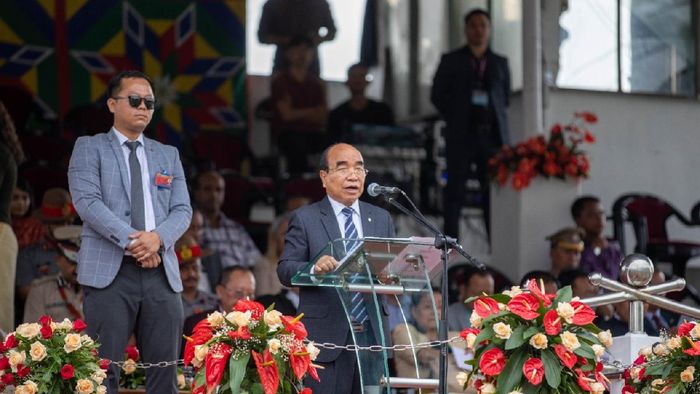Mizoram: 12,607 seek refuge in the state as strife hits Manipur, CM Zoramthanga expresses concern
In his Independence Day address, Mizoram Chief Minister Zoramthanga expressed deep concern over the distressing incidents that have unfolded in violence-ridden Manipur since early May.

- Aug 15, 2023,
- Updated Aug 15, 2023, 7:41 PM IST
Mizoram Chief Minister Zoramthanga on August 15 stated that the state government has approached the Central Government with a request for Rs 10 crore to ensure the basic necessities of the internally displaced people of Manipur in Mizoram. According to the State Home Department, as of August 15, 12,607 individuals from strife-torn Manipur have sought refuge in Mizoram. Among them, 2,765 people are residing in 38 designated relief camps, while the remaining 9,842 have found shelter outside of these camps.
In his Independence Day address, Mizoram Chief Minister Zoramthanga expressed deep concern over the distressing incidents that have unfolded in violence-ridden Manipur since early May. The ongoing ethnic conflict has left a profound impact on the Mizo society, and the Chief Minister affirmed that steps have been taken to ensure the safety and security of Mizos, particularly students, who are stranded in Imphal due to the turmoil.
"Throughout our history, Mizos have shown resilience in the face of challenges. However, the tragic events that have unfolded in our neighboring state of Manipur have deeply aggrieved the entire Mizo society," said Chief Minister Zoramthanga during the celebration of the 77th Independence Day in Aizawl.
The Mizoram government has been closely monitoring the situation in Manipur and has implemented measures to provide aid and refuge to the internally displaced Mizos who have sought shelter within Mizoram's borders. The Chief Minister revealed that more than 2,388.50 quintals of foodgrain have been distributed to those affected by the ethnic clashes in Manipur.
In response to the crisis, the Mizoram government has allocated Rs 5 crore for relief and rehabilitation efforts. The Chief Minister also acknowledged the significant contributions made by civil societies, non-governmental organizations, churches, and individuals, both in terms of monetary support and essential supplies.
The affected relief camps are located in Aizawl, Kolasib, and Saitual districts, with the highest number of internally displaced people hosted in Kolasib, followed by Aizawl and Saitual. The Kuki-Hmar-Zomi-Mizo ethnic group, commonly known as Kukis or Zo tribes, shares ethnic ties with the Mizos of Mizoram. This connection emphasizes the shared bonds and empathy between the communities.
The ethnic conflict in Manipur, which ignited on May 3 during a 'Tribal Solidarity March,' has tragically resulted in over 150 casualties and several hundred injuries. The march was organized to protest the Meitei community's demand for Scheduled Tribe (ST) status, setting off tensions within Manipur's diverse population.
Meiteis make up approximately 53 percent of Manipur's population, predominantly residing in the Imphal Valley, while tribal Nagas and Kukis constitute around 40 percent of the population, residing in the hill districts.